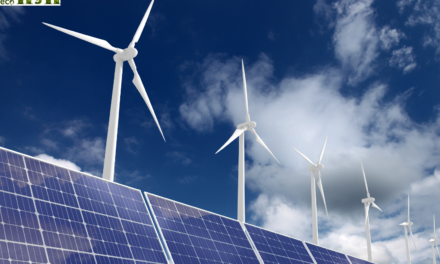When it comes to improving your home’s energy efficiency, doors and windows play a crucial role. In the UK, where heating costs and environmental concerns are on the rise, investing in energy-efficient doors and windows can make a significant difference. Not only do they help reduce heat loss and lower energy bills, but they also enhance comfort and increase property value. This buyer’s guide provides insights into materials, ratings, and designs to help you make informed decisions when choosing energy-efficient doors and windows.
Why Energy-Efficient Doors and Windows Matter
Doors and windows are often the weakest links in a home’s thermal envelope, allowing heat to escape in winter and enter in summer. Energy-efficient doors and windows are designed to minimise heat transfer, keeping your home warmer in winter and cooler in summer. By upgrading to energy-efficient options, you can:
- Reduce Heat Loss: Keep warm air inside and cold air outside.
- Lower Energy Bills: Save money by reducing the need for constant heating or cooling.
- Improve Comfort: Eliminate cold spots and draughts, creating a more consistent indoor temperature.
- Reduce Carbon Emissions: Use less energy, contributing to a greener environment.
- Increase Property Value: Energy-efficient homes are more attractive to buyers and often command higher prices.
Key Features to Look For
1. Energy Ratings
In the UK, doors and windows are rated for energy efficiency using the Window Energy Rating (WER) or Door Energy Rating (DER) system. These ratings range from A++ (most efficient) to E (least efficient). Look for products with an A or higher rating for optimal energy savings.
2. U-Values
The U-value measures how well a door or window insulates. It represents the rate of heat transfer, with lower values indicating better insulation. For energy-efficient doors and windows, aim for a U-value of 1.4 W/m²K or lower.
3. Glazing Options
The type of glazing used in windows and doors significantly impacts their energy efficiency. Consider the following options:
- Double Glazing: Features two panes of glass with a gap filled with insulating gas, such as argon.
- Triple Glazing: Includes three panes of glass for even better insulation, ideal for colder climates.
- Low-Emissivity (Low-E) Glass: Has a special coating that reflects heat back into the room, improving insulation.
4. Frame Materials
The material of the door or window frame affects its insulation properties and durability. Common options include:
- uPVC: Affordable, low-maintenance, and good insulation.
- Wood: Natural insulator with a classic aesthetic but requires regular maintenance.
- Aluminium: Strong and durable, but less insulating unless combined with a thermal break.
- Composite: Combines materials like wood and aluminium for enhanced insulation and durability.
5. Weatherstripping and Seals
High-quality weatherstripping and seals prevent air leaks and draughts, improving energy efficiency. Look for doors and windows with durable, well-fitted seals.
6. Design and Style
Energy-efficient doors and windows come in a variety of designs to suit your home’s aesthetic. Consider factors like:
- Casement vs. Sash Windows: Casement windows typically offer better insulation than sash windows.
- French vs. Patio Doors: French doors with double glazing can be energy-efficient, while sliding patio doors may have larger gaps.
- Colour and Finish: Choose finishes that complement your home’s exterior and require minimal maintenance.
Additional Tips for Choosing Energy-Efficient Doors and Windows
1. Consider Your Climate
In the UK, where winters can be cold and damp, prioritise insulation and draught-proofing features. Triple glazing and low-E glass are particularly effective in colder regions.
2. Look for Certification
Choose products certified by reputable organisations, such as the British Fenestration Rating Council (BFRC) or the Energy Saving Trust. These certifications ensure the products meet high energy efficiency standards.
3. Check for Grants and Incentives
In the UK, government schemes like the Green Homes Grant or local council initiatives may offer financial assistance for upgrading to energy-efficient doors and windows.
4. Hire Professional Installers
Proper installation is crucial for maximising energy efficiency. Hire certified installers who follow best practices to ensure a tight fit and optimal performance.
5. Balance Cost and Benefits
While energy-efficient doors and windows may have a higher upfront cost, the long-term savings on energy bills and increased property value make them a worthwhile investment.
Maintaining Energy-Efficient Doors and Windows
To ensure your doors and windows remain energy-efficient over time, follow these maintenance tips:
- Regularly clean and inspect seals and weatherstripping for wear and tear.
- Repair or replace damaged seals promptly to prevent air leaks.
- Clean glass and frames to maintain their appearance and functionality.
- Check for condensation between panes, which may indicate a broken seal.
Conclusion
Choosing energy-efficient doors and windows is a smart investment for any UK homeowner looking to reduce energy bills, improve comfort, and lower their carbon footprint. By considering factors like energy ratings, U-values, glazing options, and frame materials, you can select products that meet your needs and enhance your home’s performance.
With the right doors and windows, you’ll not only enjoy a warmer, more comfortable home but also contribute to a greener future. Take the time to research your options, consult with professionals, and make informed decisions to maximise the benefits of your investment.
By upgrading to energy-efficient doors and windows, you’ll save money, increase your property’s value, and make your home more sustainable. Stay warm, stay efficient, and enjoy the long-term rewards of this smart home improvement!




